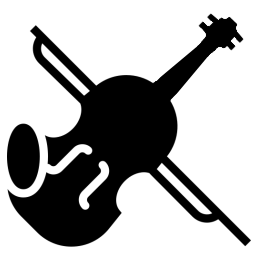The Violin and Viola
The violin, sometimes called the fiddle, has been a staple of the orchestra for over 400 years since it's development in the 17th century. The violin has four strings tuned in perfect fifths with notes G3, D4, A4, & E5. It was modeled after the existing viole da braccio which had only three strings. The violin and the viola are closely related in both origin and construction, the viola slightly larger with a broader sound, developed after its predecessor the viole da gamba, also three-stringed.
The earliest known use of term 'violin' was in English about 1570s from the Italian 'violini' based on the Latin 'vitula' meaning "stringed instrument." The violin is an advanced form of the Medieval viole de braccio meaning 'arm viola.' Its larger cousin, the viole de gamba or 'bass viola,' Italian for 'viola for the leg,' first coined in the early 18th century.
To the right is the Italian painting 'Madonna of the Orange Trees,' circa 1529-30. It is the earliest known record of the instrument. It pictures a cherub playing the early violin predecessor, the viole de braccio.
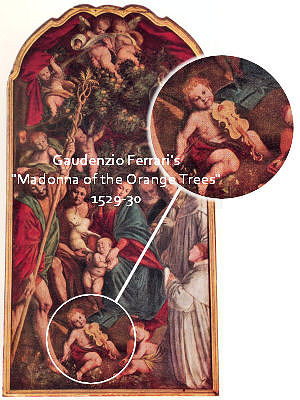
With the training of Nicola Amati, in 1665-66 Antonio Stradivari built his first violin and began making his eternally renowned line of instruments; thus, the violin now established its presence in the orchestra and chamber music. Following, the violin became the inspiration of many orchestral compositions by great composers such as Bach, Brahms, and Mozart, especially in their chamber works. Since and today, the violin has retained its role in classical music along with most modern musical forms.
Exploded Diagram of the Violin and Viola
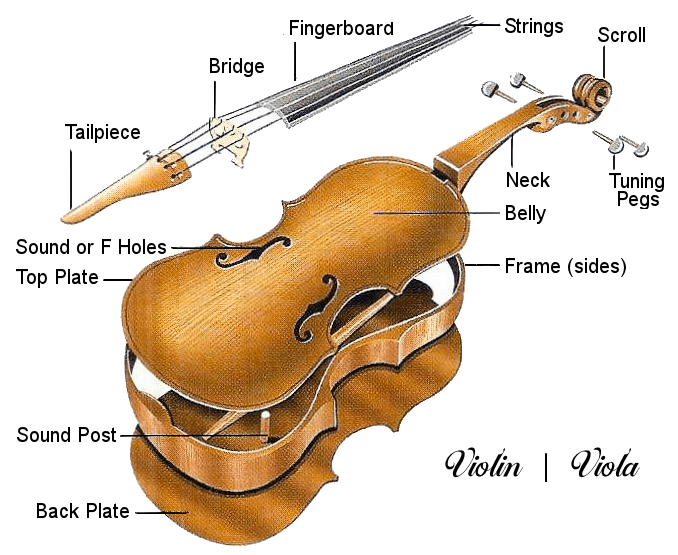
Use of the Violin and Viola
The violin player holds the violin under the chin with the left hand around the neck, thumb underneath for support against the palm. See image to right
The left hand fingers press the strings at different points up and down the neck to produce the proper notes.
The right hand holds and maneuvers the bow across and against the strings. The right hand fingers are also used to pluck the strings. See image right

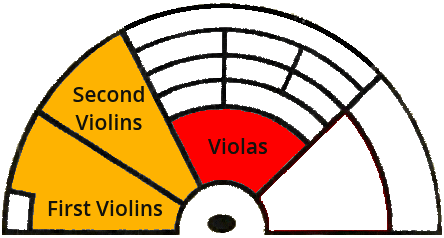
Where in the Orchestra?
The first and second violins are seated at the front of the orchestra left of the conductor.
The violas are seated in the center of the orchestra in front of the conductor.
Similar instruments in the strings group are the double bass, cello, viola, and violin. See image right
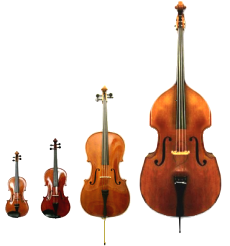
Noteworthy Violin and Viola Players
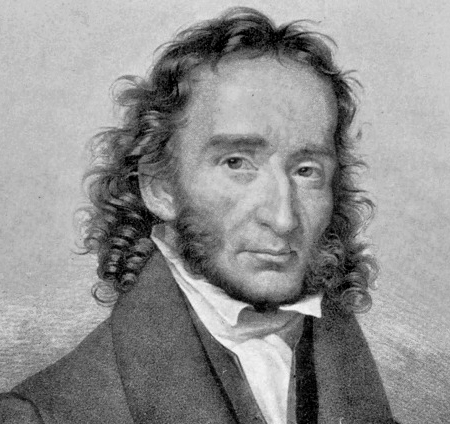
Niccoli Paganini
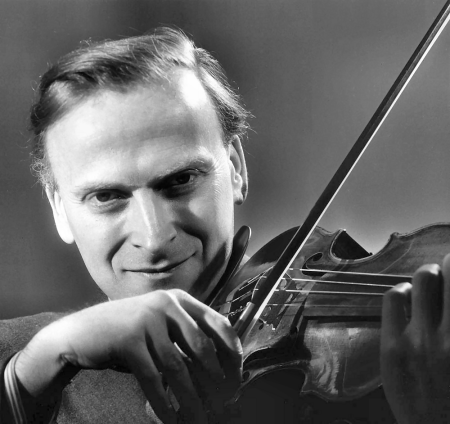
Baron Yehudi Menuhin
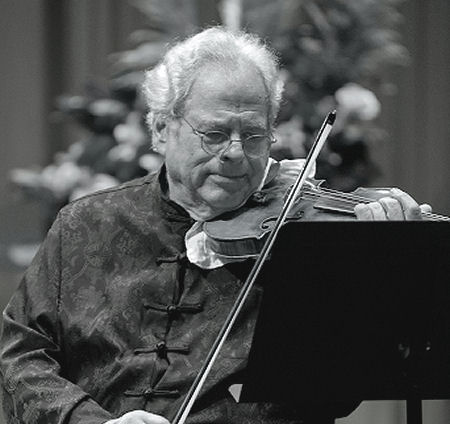
Itzhak Perlman
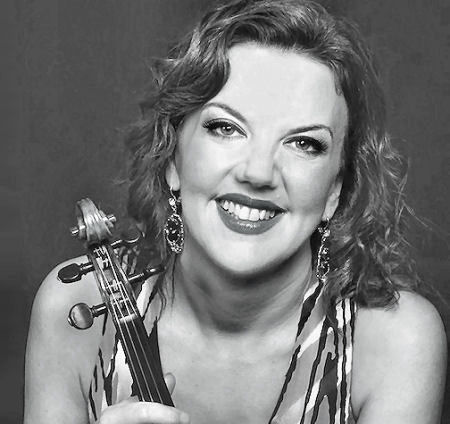
Tasmin Little


